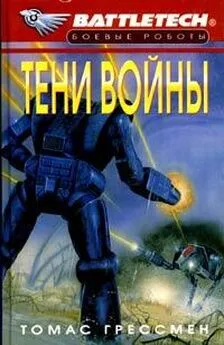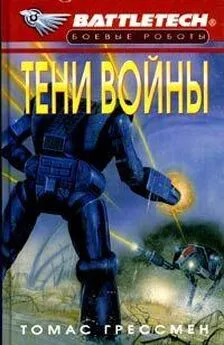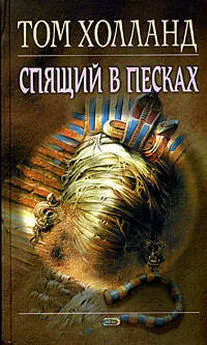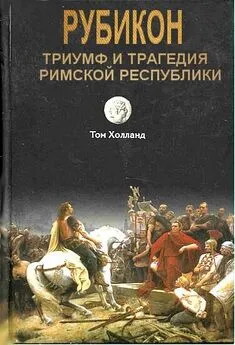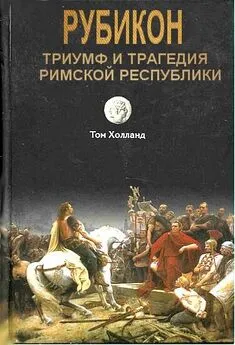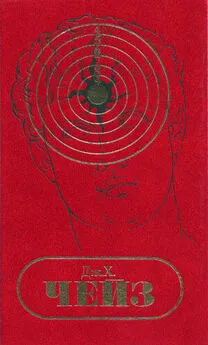Том Холланд - В тени меча. Возникновение ислама и борьба за Арабскую империю
- Название:В тени меча. Возникновение ислама и борьба за Арабскую империю
- Автор:
- Жанр:
- Издательство:Литагент «Центрполиграф»a8b439f2-3900-11e0-8c7e-ec5afce481d9
- Год:2015
- Город:Москва
- ISBN:978-5-227-05974-1
- Рейтинг:
- Избранное:Добавить в избранное
-
Отзывы:
-
Ваша оценка:
Том Холланд - В тени меча. Возникновение ислама и борьба за Арабскую империю краткое содержание
В VI в. Ближний Восток был поделен между двумя великими империями – Персидской и Римской. Прошло сто лет, и на их месте возникла новая супердержава – Арабская империя. Перемены, произошедшие в этот период, были не только политическими или культурными – случилась трансформация человеческого общества, ее последствия для будущего оказались огромными. Сегодня больше половины мирового населения исповедует ту или иную религию, которые оформились именно в период поздней Античности. И как убедительно доказывает Том Холланд, все то, во что сегодня верят иудеи, христиане и мусульмане относительно истоков их религий, далеко не однозначно.
Исследуя понимание божественного в сознании жителей великих империй, автор ведет рассказ о войнах и чуме, императорах в роскошных дворцах и о покрытых язвами мучениках на столбах, о переполненных городах и безлюдных пустынях. Это история полная драматизма и удивительных открытий.
В тени меча. Возникновение ислама и борьба за Арабскую империю - читать онлайн бесплатно ознакомительный отрывок
Интервал:
Закладка:
Roziewicz, M.: ‘Graeco-Islamic Elements at Kom el Dikka in the Light of New Discoveries: Remarks on Early Mediaeval Alexandria’ (Graeco Arabica 1, 1982).
Rubin, Uri: The “Constitution of Medina”: Some Notes’ (Studia Islamica 62, 1985).
Ibid. ‘Hanifiyya and Ka’ba. An Inquiry into the Arabian Pre-Islamic Background of Din Ibrahim’ (Jerusalem Studies in Arabic and Islam 13, 1990).
Ibid. The Eye of the Beholder: The Life of Muhammad as Viewed by the Early Muslims (Princeton, 1995).
Ibid, (ed.): The Life of Muhammad (Aldershot, 1998).
Rubin, Zeev: The Mediterranean and the Dilemma of the Roman Empire in Late Antiquity’ (Mediterranean Historical Review 1, 1986).
Ibid. The Reforms of Khusro Anushirwan’, in Cameron 1995.
Ruether, Rosemary Radford: ‘Judaism and Christianity: Two Fourth-Century Religions’ (Sciences Religieuses Studies in Religion 2, 1972).
Russell, James C.: The Germanization of Early Medieval Christianity: A Sociohistorical Approach to Religious Transformation (Oxford, 1994).
Russell, Josiah C.: That Earlier Plague’ (Demography 5, 1968).
Rutgers, L. V.: ’Archaeological Evidence for the Interaction of Jews and Non– Jews in Antiquity’ (American Journal of Archeology 96, 1992).
Ryckmans, G.: ’Dhu ’l-Shara’ in Encyclopaedia of Islam Saadi, Abdul-Massih: ’The Letter of John of Sedreh: A New Perspective on Nascent Islam’ (Karmo 1, 1999).
Sachot, Maurice: ’Comment le Christianisme est-il devenu religio?’ (Revues des Sciences Religieuses 59, 1985).
Saleh, Walid: ’In Search of a Comprehensible Qur’an: A Survey of Some Recent Scholarly Works’ (Royal Institute for Inter-Faith Studies 5, 2003).
Ibid. The Etymological Fallacy and Quranic Studies: Muhammad, Paradise and Late Antiquity’ (http://www.safarmer.com/Indo-Eurasian/Walid_Saleh.pdf).
Sand, Shlomo: The Invention of the Jewish People (London, 2009).
Sarris, Peter: Economy and Society in the Age of Justinian (Cambridge, 2006) Schacht, Joseph: ‘A Reevaluation of Islamic Tradition’ (Journal of the Royal Asiatic Society of Great Britain and Ireland, 1949).
Ibid. The Origins of Muhammadan Jurisprudence (Oxford, 1950).
Ibid. ‘Classicisme, Traditionalisme et Ankylose dans la Loi Religieuse de l’lslam’, in Classicisme et Declin Culturel dans FHistoire de ITslam, ed. Robert Brunschvig and Gustave E. von Grunebaum (Paris, 1977).
Schafer, Peter: Jesus in the Talmud (Princeton, 2007).
Schwartz, Seth: Imperialism and Jewish Society from 200 все to 640 ce (Princeton, 2001).
Scott, Roger D.: ’Malalas, the Secret History, and Justinian’s Propaganda’ (Dumbarton Oaks Papers 39, 1985).
Segal, Alan F.: Rebecca’s Children: Judaism and Christianity in the Roman World (Cambridge, Mass., 1986).
Segal, J. B.: ’Mesopotamian Communities from Julian to the Rise of Islam’ (Proceedings of the British Academy 41, 1955).
Ibid. Edessa and Harran (London, 1963).
Ibid. Edessa ’the Blessed City’ (Oxford, 1970).
Sells, Michael: Approaching the Qur’an: The Early Revelations (Ashland, 1999) Serjeant, R. B.: The Sunnah Jami’ah, Pacts with the Yathrib Jews, and the Tahrim of Yathrib: Analysis and Translation of the Documents Comprised in the So– called «Constitution of Medina’» (Bulletin of the School of Oriental and African Studies 41, 1978).
Ibid. ’Meccan Trade and the Rise of Islam: Misconceptions and Flawed Polemics’ (Journal of the American Oriental Society 110, 1990).
Shahid, Irfan: The Martyrs of Najran: New Documents (Brussels, 1971).
Ibid. Rome and the Arabs: A Prolegomenon to the Study of Byzantium and the Arabs (Washington, 1984).
Ibid. Byzantium and the Semitic Orient before the Rise of Islam (London, 1988).
Ibid. Byzantium and the Arabs in the Fifth Century (Washington, 1989).
Ibid. Byzantium and the Arabs in the Sixth Century (2 vols) (Washington, 1995).
Shaki, Mansour: The Cosmogonical and Cosmological Teachings of Mazdak’, in Papers in Honour of Professor Mary Boyce (Acta Iranica 24, 1985).
Shani, Raya: The Iconography of the Dome of the Rock’ (Jerusalem Studies in Arabic and Islam 23, 1999).
Sharon, Moshe: Black Banners from the East: The Establishment of the Abbasid State (Jerusalem, 1983).
Ibid, (ed.): Pillars of Smoke and Fire: The Holy Land in History and Thought (Johannesburg, 1988).
Shoufani, Elias: Al-Riddah and the Muslim Conquest of Arabia (Toronto, 1973).
Simon, Marcel: Verus Israel: A Study of the Relations between Christians and Jews in the Roman Empire (133–425), trans. H. McKeating (Oxford, 1986).
Simon, Robert: Ignac Goldziher: His Life and Scholarship as Reflected in his Works and Correspondence (Leiden, 1986).
Sivan, Hagith: ’From Byzantine to Persian Jerusalem: Jewish Perspectives and Jewish/Christian Polemics’ (Greek, Roman and Byzantine Studies 41, 2000).
Ibid. Palestine in Late Antiquity (Oxford, 2008).
Sivers, Peter von: ’The Islamic Origins Debate Goes Public’ (http://www.blackwellpublishing.com/pdf/compass/hico_058.pdf).
Sizgorich, Thomas: ‘Narrative and Community in Islamic Late Antiquity’ (Past and Present 185, 2004).
Ibid. “Do Prophets Come with a Sword?” Conquest, Empire and Historical Narrative in the Early Islamic World’ (American Historical Review 112, 2007).
Ibid. Violence and Belief in Late Antiquity: Militant Devotion in Christianity and Islam (Philadelphia, 2009).
Skarsaune, Oskar and Hvalvik, Reidar (eds): Jewish Believers in Jesus: The Early Centuries (Peabody, 2007).
Skjaervo, P. O.: ‘Azdaha: In Old and Middle Iranian’, in Encyclopedia Iranica Sourdel, D.: Les Cultes du Hauran (Paris, 1952).
Stathakopolous, Dionysius: The Justinianic Plague Revisited’ (Byzantine and Modern Greek Studies 24, 2000).
Ibid. Famine and Pestilence in the Late Roman and Early Byzantine Empire: A Systematic Survey of Subsistence Crises and Epidemics (Aldershot, 2004).
Stemberger, Günter: Jews and Christians in the Holy Land: Palestine in the Fourth Century, trans. R. Tuschling (Edinburgh, 2000).
Stetkevych, Suzanne Pinckney: The Poetics of Islamic Legitimacy: Myth, Gender, And Ceremony in the Classical Arabic Ode (Bloomington, 2002).
Stoneman, Richard: Alexander the Great: A Life in Legend (New Haven, 2008).
Stroumsa, Guy: ‘Old Wines and New Bottles: On Patristic Soteri-ology and Rabbinic Judaism’, in The Origins and Diversity of Axial Age Civilizations, ed. S. N. Eisenstadt (Albany, 1986a).
Ibid. ‘’’Seal of the Prophets”: The Nature of a Manichaean Metaphor’ (Jerusalem Studies in Arabic and Islam 7, 1986b).
Ibid. The Body of Truth and its Measures: New Testament Canonization in Context’, in Festschrift Kurt Rudolph, ed. H. Preissler and H. Seiwert (Marburg, 1995).
Stroumsa, Rachel: People and Identities in Nessatta (Ph.D. thesis, Duke University, 2008).
Strugnell, John: ‘Notes on the Text and Transmission of the Apocryphal Psalms 151, 154 (= Syr. II) and 155 (– Syr. ПГ (Harvard Theological Review 59, 1966).
Taylor, Joan E.: Christians and the Holy Places: The Myth of Jewish – Christian Origins (Oxford, 1993).
Taylor, Miriam S.: Anti-Judaism and Early Christian Identity: A Critique of the Scholarly Consensus (Leiden, 1995).
Teall, John L.: ‘The Barbarians in Justinian’s Armies’ (Speculum 40, 1965) Teixidor, Javier: The Pagan God: Popular Religion in the Greco-Roman Near East (Princeton, 1977).
Thieme, P.: ‘The Concept of Mitra in Aryan Belief, in Mithraic Studies: Proceedings of the First International Congress of Mithraic Studies, vol. 1 (Manchester, 1975).
Torrey, Charles Cutler: The Jewish Foundation of Islam (New York, 1933).
Traina, Giusto: 428 ad: An Ordinary Year at the End of the Roman Empire, trans. Allan Cameron (Princeton, 2009).
Trimingham J. Spencer: Christianity among the Arabs in Pre-Islamic Times (London, 1979).
Van Bekkum, Wout Jac: ‘Jewish Messianic Expectations in the Age of Heraclius’, in Reinink and Stolte.
Van Bladel, Kevin: ‘The Alexander Legend in the Qur’an 18:83– 102’, in Reynolds Van Ess, J.: ‘Abd al-Malik and the Dome of the Rock: An Analysis of Some Texts’, in Raby and Johns.
Wansbrough, John: Ouranic Studies: Sources and Methods of Scriptural Interpretation (Oxford, 1977).
Ibid. The Sectarian Milieu: Content and Composition of Islamic Salvation History (Oxford, 1978).
Ibid. Res Ipsa Loquitur: History and Mimesis (Jerusalem, 1987).
Ward-Perkins, Brian: The Fall of Rome and the End of Civilization (Oxford, 2005) Watt, William Montgomery: Muhammad at Mecca (Oxford, 1953).
Ibid. Muhammad at Medina (Oxford, 1956).
Ibid. Islamic Creeds: A Selection (Edinburgh, 1994).
Watts, E.: City and School in Late Antique Athens and Alexandria (Berkeley, 2006).
Weinberger, Leon J.: Jewish Hymnography: A Literary History (London, 1998) Weitzman, M. P.: The Syriac Version of the Old Testament: An Introduction (Cambridge, 1999).
Welles, С. B.: The Discovery of Serapis and the Loundation of Alexandria’ (Historia 11, 1962).
Wellhausen, J.: The Arab Kingdom and its Lall, trans. M. G. Weir (Calcutta, 1927) Wheeler, Brannon M.: ’Imagining the Sasanian Capture of Jerusalem’ (Orientalia Christiana Periodica 57, 1991).
Ibid. Moses in the Quran and Islamic Exegesis (Chippenham, 2002).
Whitby, M.: ’The Persian King at War’, in Dabrowa ’Recruitment in Roman Armies from Justinian to Heraclius (ca. 565–615)’, in Cameron 1995.
Whittow, Mark: The Making of Orthodox Byzantium, 600—1025 (Basingstoke, 1996).
Wickham, Chris: The Inheritance of Rome: A History of Europe from 400 to 1025 (London, 2009).
Wiechmann, Ingrid and Grupe, Gisela: ’Detection of Yersinia Pestis DNA in Two Early Medieval Skeletal Linds from Aschheim (Upper Bavaria, 6th Century ad)’ (American Journal of Phystcal Anthropology 126, 2005).
Wiesehofer, Josef: Ancient Persia, trans. Azizeh Azodi (London, 2001).
Wild, Stefan (ed.): The Qur’an as Text (Leiden, 1996).
Wilken, Robert L.: The Land Called Holy: Palestine in Christian History and Thought (New Haven, 1992).
Wilson, A. N.: God’s Puneral (London, 1999).
Wolfram, Herwig: History of the Goths, trans. Thomas J, Dunlap (Berkeley, 1988) Yahya, Parhia: ’The Life of Abdullah Ibn al-Mubarak: The Scholar of the East and the Scholar of the West (http://fair.files. wordpress.com/2010/08/biography– abdullah-ibn-al– mubarak.pdf).
Yarshater, Ehsan: ‘Mazdakism’, in Cambridge History of Iran. The Persian Presence in the Islamic World’, in The Persian Presence in the Islamic World, ed. Richard G. Hovannisian and Georges Sabagh (Cambridge, 1998).
Young, William G.: Patriarch, Shah and Caliph: A Study of the Relationships of the Church of the East with the Sassanid Empire and the Early Caliphates up to 820 ad (Rawalpindi, 1974).
Zaehner, R. C.: The Dawn and Twilight of Zoroastrianism (London, 1961).
Благодарности
Мне потребовалось очень много времени, чтобы завершить эту книгу. Она открыла мне глаза на мир, полный сложностей и особых чар, о существовании которых я даже не подозревал, когда только занялся проектом. Поэтому я в неоплатном долгу перед людьми, которые помогали мне в его осуществлении. В первую очередь я хочу выразить благодарность моему редактору Ричарду Бесуику, Йену Ханту, Сюзан де Суассон и всем сотрудникам LB; Герри Ховарду, Терезе Лёве-Банерс, Фрицу ван дер Мейцу. Я также благодарен Патрику Уолшу, лучшему из агентов, и всем сотрудникам агентства Conville&Walsh. Словно пигмей, стоящий на плечах у великанов, или глупец, врывающийся туда, куда боятся ступить ангелы, я безмерно признателен ученым, которые помогли мне определить область исторических исследований, более плотно усеянную фугасными снарядами неожиданностей и парадоксов, чем любая другая. Реза Аслан, Джеймс Карлтон Пейджет, Патриция Кроун, Веста Кёртис, Джералд Хотинг, Роберт Ирвин, Кристофер Келли, Хью Кеннеди, Дэн Мэдиган, Зиаутдин Сардар, Ги Штроумса и Брайан Уорд-Перкинс прочитали части первого варианта рукописи и дали доброжелательные и подробные отзывы. Я также благодарен Фреду Доннеру и Роберту Хойланду, которые потратили много своего личного времени на беседы со мной, и Робину Лейну Фоксу, укрепившему мою решимость в тот момент, когда я впервые осознал масштаб стоящей передо мной задачи. Я должен признаться в своем абсолютном и полном невежестве в восточных языках и выразить глубочайшую благодарность людям, переводившим научные труды на латинский, французский и английский языки. Переводы с арабского и сирийского языков специально для меня выполнил Салам Расси, человек, в котором выдающая ученость сочетается с удивительным терпением и высокой эффективностью. Андреа Вульф, как обычно, помогла мне там, где мои знания немецкого языка оказались недостаточными. И наконец, я безмерно признателен своей семье и друзьям, которым в течение пяти долгих лет приходилось выслушивать мои безумные бормотания об эфталитах, хариджитах и обитателях Халкидона (Халкедона, Кадикея). Я также благодарен Джейми Муиру за неизменную поддержку и советы, Кевину Симу, которому каким-то непостижимым образом на основе рукописи удалось создать фильм. Именно к нему я теперь обращаюсь всякий раз, когда мое желание обсудить монеты Омейядов становится непреодолимым. И конечно, я не могу не упомянуть о моей обожаемой семье – Сэди, Кэти и Элизе.
Читать дальшеИнтервал:
Закладка:

